How much attention do you pay to sidewalks? We went on a walk audit in downtown Appleton, and you can, too.
APPLETON — On a warm spring morning in late May, I took to the streets with other interested citizens to get up close and personal with downtown Appleton's pavement.
Armed with a partner and a pair of clip boards, I walked a segment of North Richmond Street, from West College Avenue to West Franklin Street — intersections included — and made notes about the quality of pedestrian life we perceived.
Our goal was to rate the walkability of those sidewalks and crossings, filling out a 12-page checklist which encouraged us to think very specifically about how each element might impact every sort of person who might pass it by.
I, personally, was also looking at the sidewalks with an eye for wheelchair accessibility. While my mother isn't confined to a wheelchair, she can't walk very far. When we go on adventures, I try to scout our path ahead of time to avoid another experience like we had in Chicago, where the sidewalk was tilted so steeply she nearly rolled into traffic.
If she were on her own, the way would have been impassable.
Turns out, when you're really looking for potential issues, they all sort of pop up.
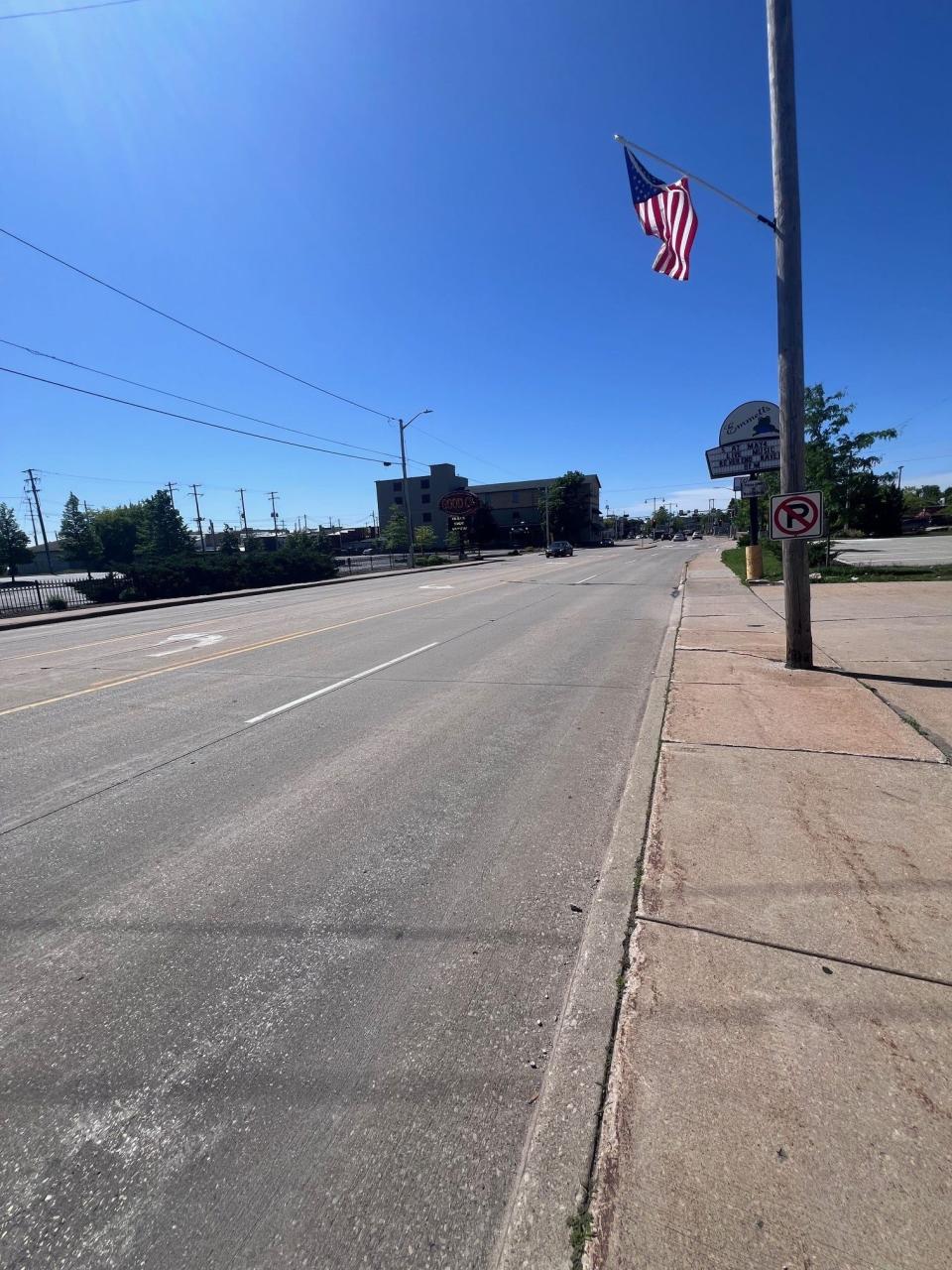
Back up. Why were you out there getting nit-picky?
Why should citizens do these, and not city engineers? Simply put, the city has a lot of sidewalks. According to Michael Hardy, a city traffic engineer, we have 459 miles of street sidewalk, 7.4 miles of park sidewalk and 8.5 miles of trail.
That sidewalk is maintained by Department of Public Works employees, but no employee is dedicated to only sidewalks, and Hardy said, employees from public works and the Parks & Recreation Department spend a fraction of their time on sidewalk/trail upkeep, planning and development. On average, he said, there's "roughly half an employee per 100 miles" of sidewalk and trail.
It isn't feasible for city staff to spend significant time on every piece of concrete frequently enough to notice the things pedestrians walking or rolling on those streets already know by heart. And that's not just Appleton, but any city.
In this case, I was invited by Jennifer Stephany, of Appleton Downtown Inc., to the Walk Audit and Lane Reconfiguration Roundtable on May 29, because I am someone who works in the downtown area.
Myself and the Post-Crescent staff spend a decent amount of time walking downtown, so we were interested to hear what the city learned from the lane reconfiguration pilot program — though the data they had was already reported in February, with new data expected later this summer — and participate in the audit.
I walked alongside other interested citizens, downtown business owners and those who advocate for persons with disabilities. My partner for this exercise was Jean Kenevan, a rehabilitation specialist who works for Wisconsin's Office for the Blind and Visually Impaired.
What is a walk audit?
AARP offers a walk audit tool kit, available free of charge, to members of the public who want to grade city streets in their neighborhood.
The kit includes instructions on how to perform the audit, how to communicate using language that city engineers use, and how to present your findings to governing bodies, should you come upon something you feel needs to be addressed. It also offers the aforementioned 12-page checklist to help identify what you should be on the lookout for.
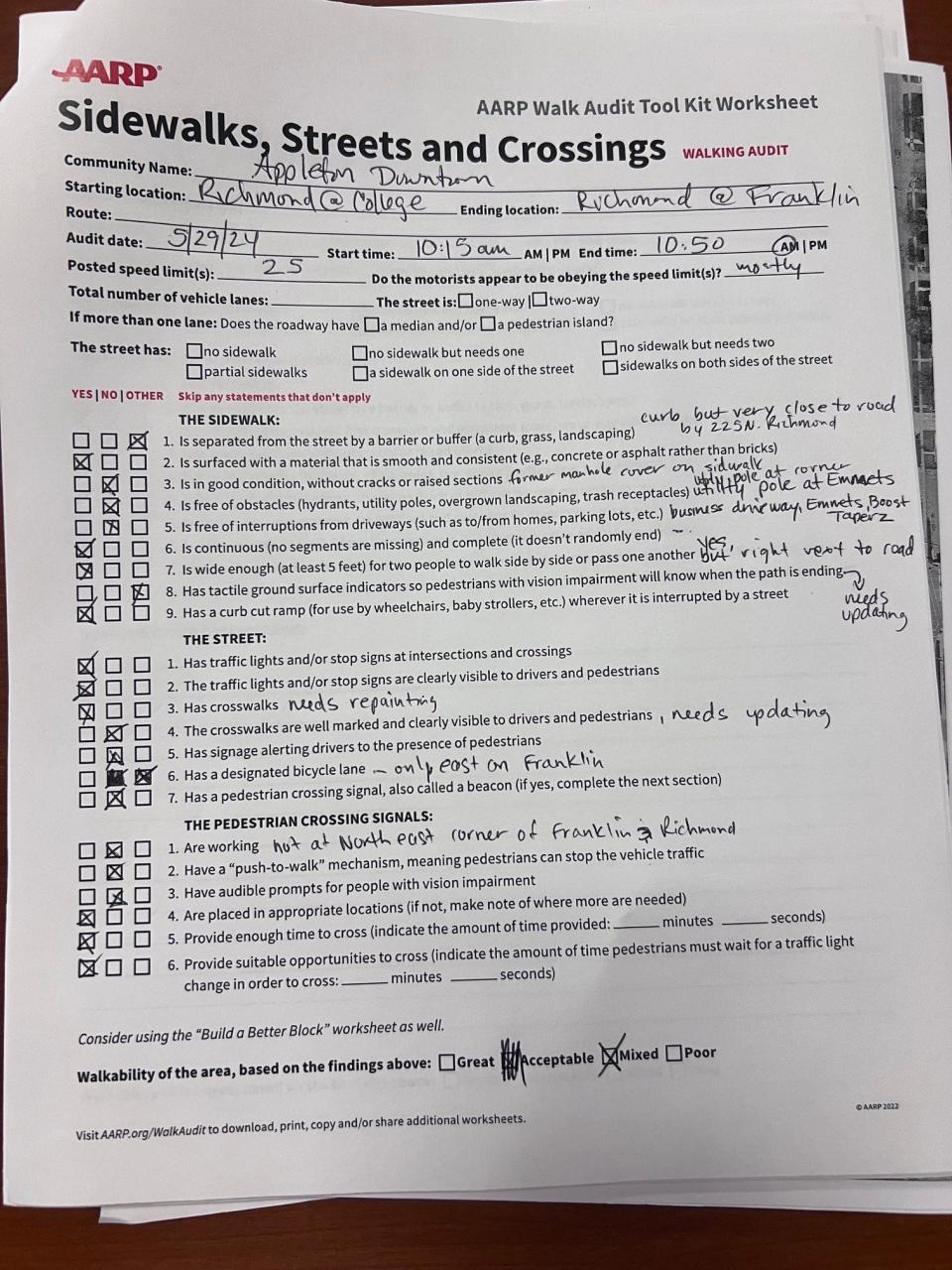
For example, the checklist asks you if a sidewalk is wide enough for two people to walk side-by-side, if it has a barrier or buffer separating it from the street and if it is free of obstacles.
What did you find?
When we first approached Richmond Street, I thought we'd be in and out in five minutes — this is part of my commute, and it never seemed that bad from behind the wheel. But we found a lot more little things than we expected.
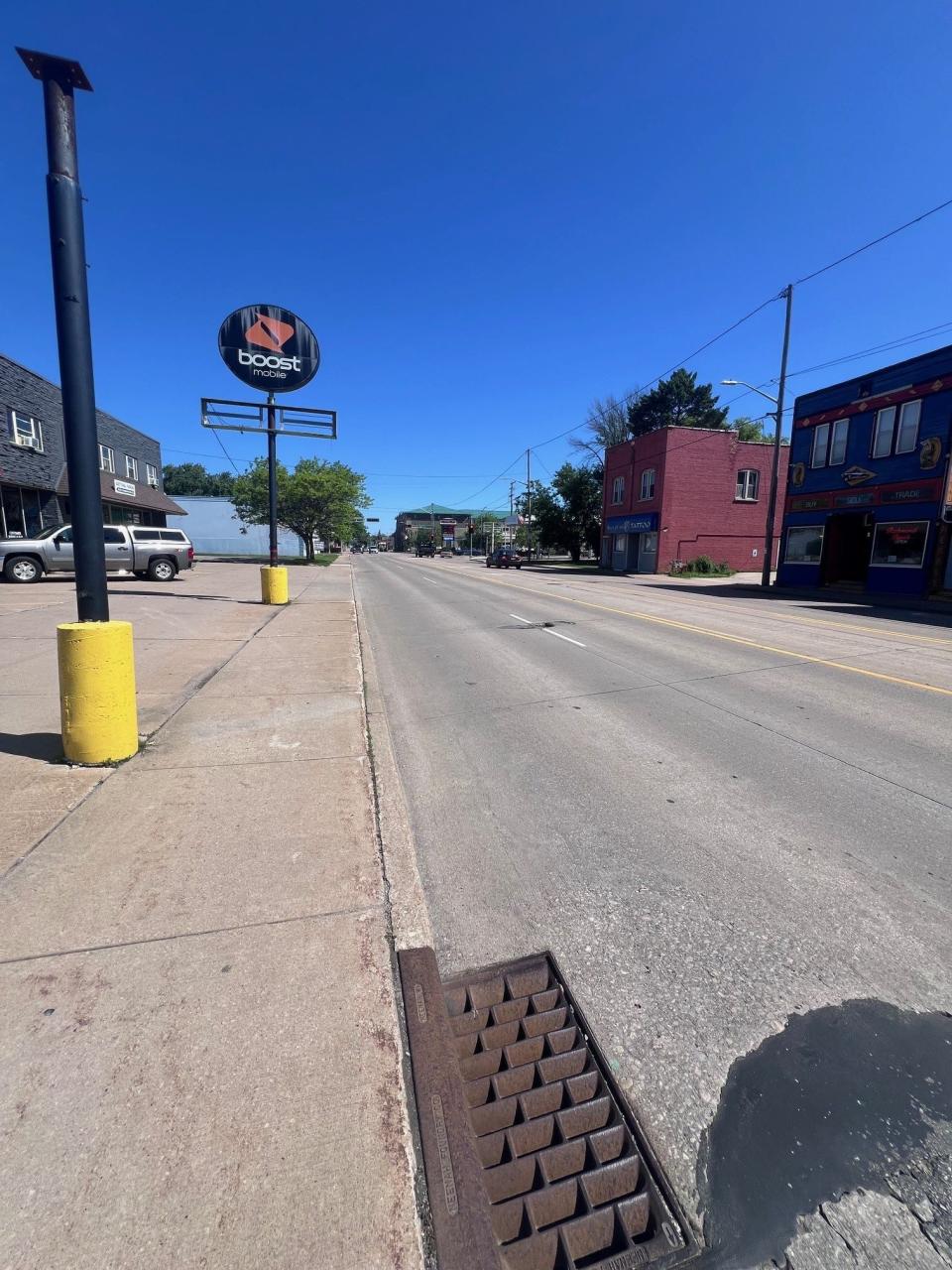
For one thing, the sidewalk on that segment of roadway is immediately adjacent to the street. At first, I didn't really think about just how close I was to the passing traffic, until a large box truck passed and the rush of air made my head spin.
In front of the small mall of shops — the one housing Taperz Barber Shop and Lindo Mexican Restaurant, among others — we noted that it was, in places, hard to distinguish the parking lot and driveways for those businesses from the sidewalk, and we observed cars driving on the sidewalk portions while turning in to the small lot.
We market spots where the concrete was uneven, and noticed that on the southwest corner of the intersection with Franklin, the stoplight pole blocked part of the sidewalk. Two of the pedestrian crossing signals we came upon also had no audible beep to confirm that you'd pressed them.
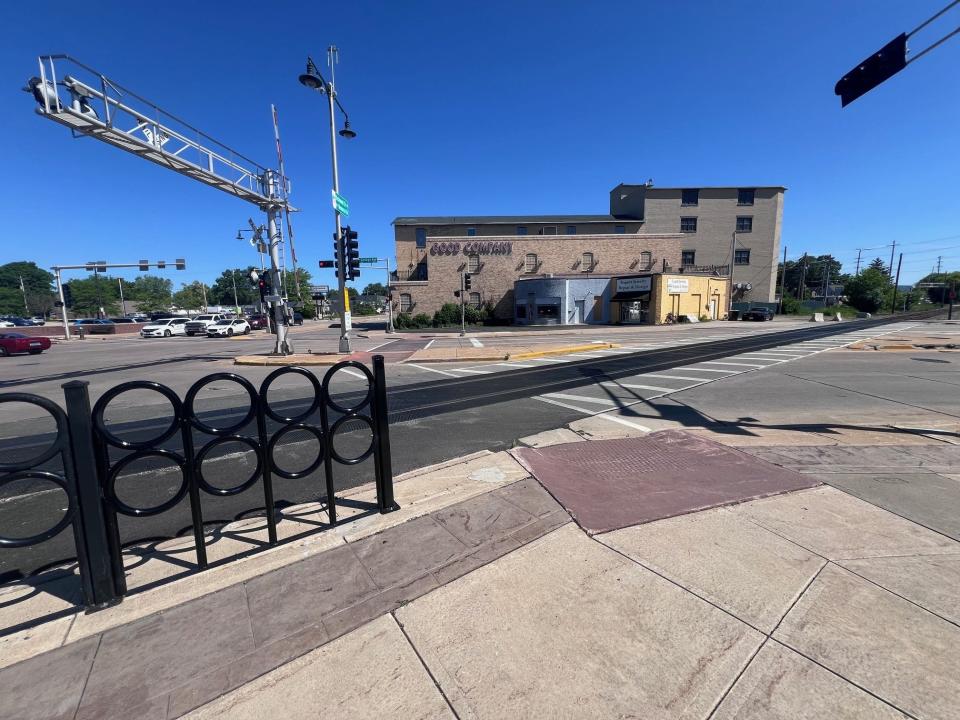
On the south end, we had lots to say about the crosswalks at the intersection of College and Richmond, mostly due to the railroad tracks which also cross there.
Some engineering efforts had obviously been made to adjust one of the crosswalks so that it crossed the tracks at a perpendicular angle, to avoid wheelchair wheels getting stuck on the tracks. But, in doing so, the angle of the crosswalk was changed to enough of a degree that someone who has limited vision may not notice that it turns, and may leave the crosswalk and, depending on their direction, either trip on the curb or walk into the intersection.
Meanwhile, in the other spot where the crosswalk crossed the tracks, the angle of approach was not changed, creating the aforementioned danger to wheelchairs.
"If I were training someone with vision loss at that intersection, I may have them avoid the south side the of intersection to avoid the railroad tracks right in the intersection," Kenevan said.
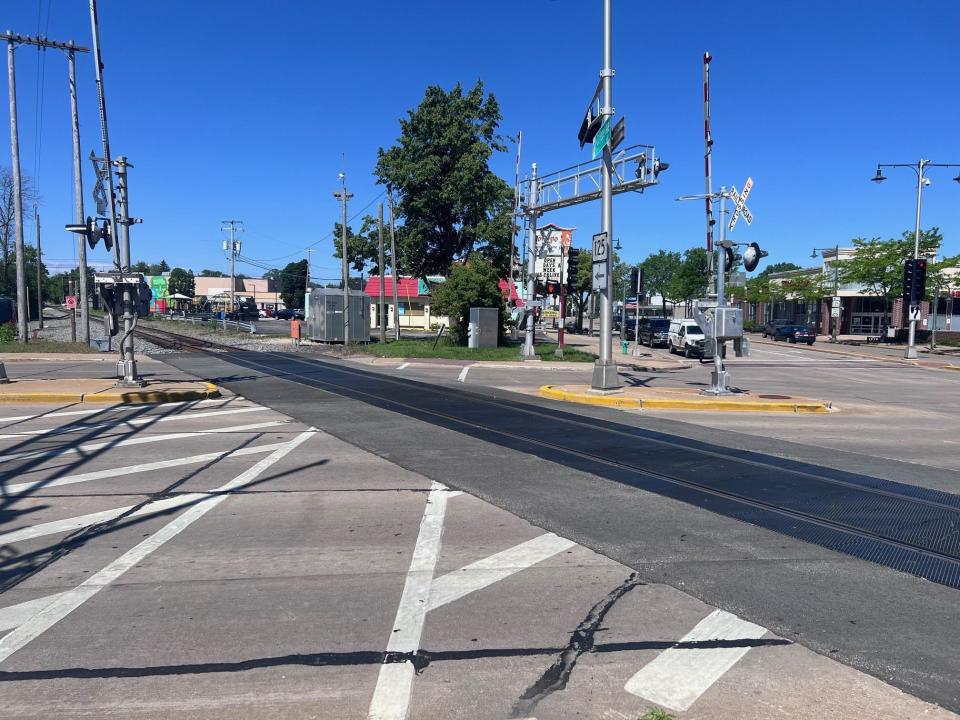
Why is walkability important?
According to an AARP stat quoted to us by Darrin Wasniewski, Senior Associate State Director of Community Outreach for AARP — and the person who showed us how to conduct the audit — by 2034, there will be more people over 65 years old than those under 18, for the first time ever.
Historically, cities predominantly designed roadways to benefit cars, but your ability to drive can be lost in an instant. A fall on some ice, for example, left my mother with crushed nerves in her neck, which limit her ability to turn her head. You need to turn your head a lot when you're driving, so now I'm her chauffeur.
And, for those without someone to drive them, walking among cars carries its own dangers.
According to the Wisconsin Department of Transportation, between 2018 and 2022, an average of 1,340 pedestrians per year were involved in crashes in the state, with an average of 56 of those pedestrians dead as a result. Of the 1,324 crashes involving pedestrians in 2022, 29% took place at an intersection, in a marked crosswalk. Additionally, older pedestrians, the department data says, are more likely to die when involved in a crash.
While pedestrian injuries have been on a steady decline over the last two decades, the department said, recent years did see slight increases.
What can citizens do to help?
In the case of the May walk audit, I and the other participants got a chance to sit down with city staff and go over our concerns in the moment. We marked up maps with notes and discussed the feasibility of changes.
For those interested in conducting their own audit, the AARP walk audit tool kit is available for download, in both English and Spanish, at aarp.org/walkaudit. If you're out walking the dog, going for a jog or trying to get from point A to point B, and spot a segment of sidewalk with room for improvement, walking that segment with the checklist in hand can help you make an argument for what, specifically, is in need, and why.
"By engaging a range of perspectives and demographics in the review process, we gain valuable insights into how user experience the area," said Stephany. "We observe behaviors and infrastructure, and collaboratively discuss ideas for improvements."
Once you have feedback to offer, a good place to start, Hardy said, is the public works' street maintenance webpage, appleton.org/residents/street-maintenance, which offers both FAQs and a link to contact the department by email.
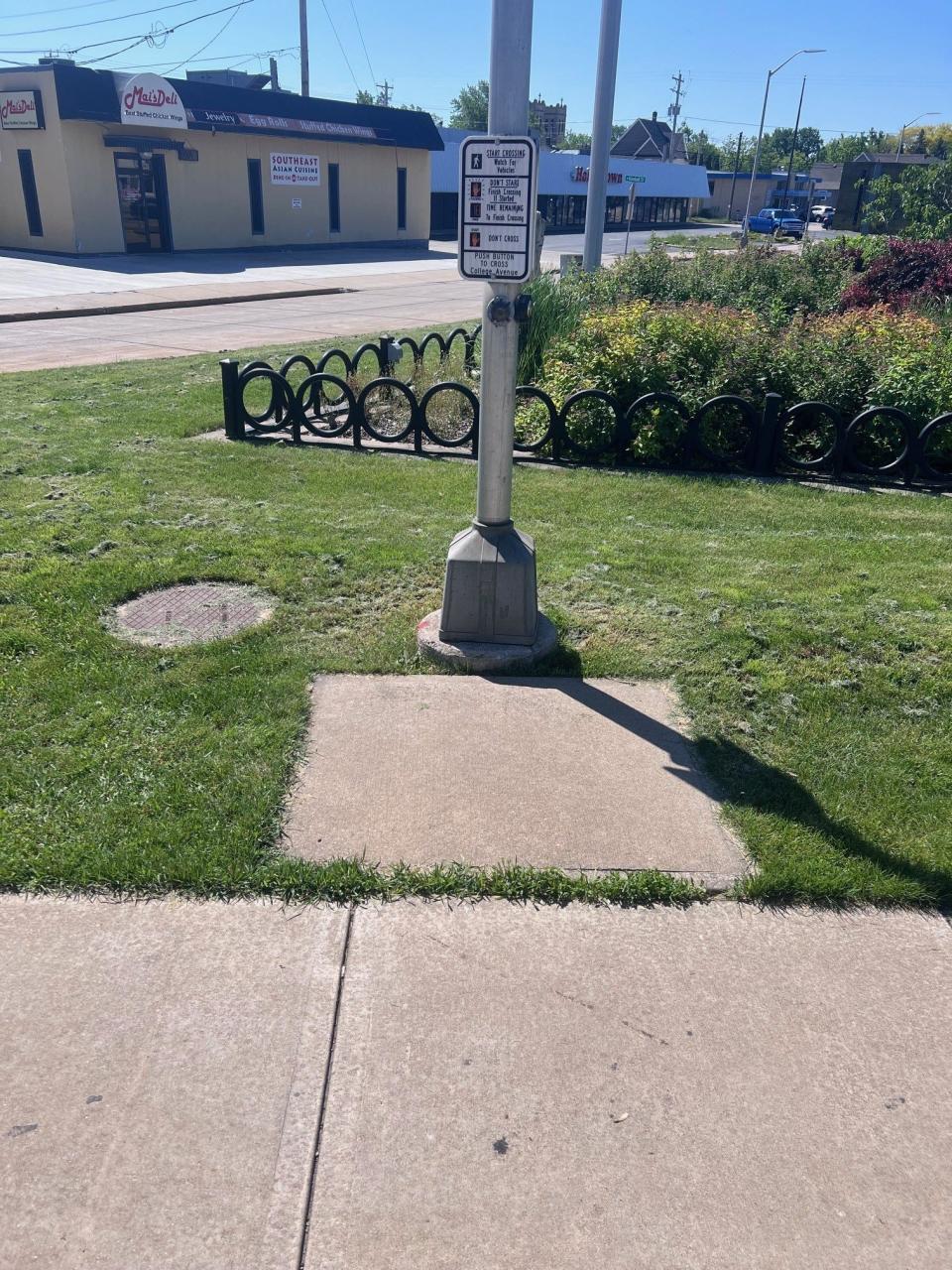
The Post-Crescent would like to hear from you
If you do undertake a walk audit, the Post-Crescent would like to know which streets you walked, and what feedback you have. That feedback may be used in future reporting on the walkability of Appleton and the surrounding Fox Cities. Email me at [email protected] to share your thoughts.
Taima Kern is editor of the Post-Crescent. She can be reached at [email protected] or 920-907-7819.
This article originally appeared on Appleton Post-Crescent: AARP's Walk Audit tool kit is available for Wisconsin pedestrians
